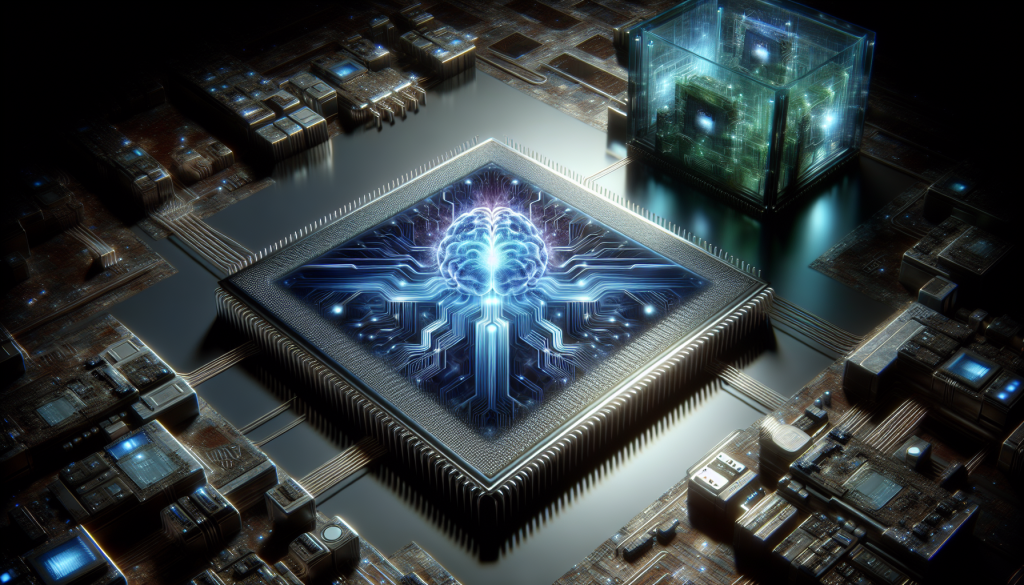
Neuromorphic Chips: Computers That Think Like Us
Neuromorphic Chips: Computers That Think Like Us
Imagine a world where computers can emulate the human brain, performing complex tasks and making decisions in a way that is not just logical, but also intuitive. This may sound like something out of a science fiction novel, but it is quickly becoming a reality thanks to neuromorphic chips. These revolutionary computer chips are designed to mimic the structure and function of the human brain, paving the way for a new era of computing. In this article, we will dive into what neuromorphic chips are, how they work, and the potential impact they may have on various industries. Get ready to discover the future of computing with neuromorphic chips.
The Basics of Neuromorphic Chips
Neuromorphic chips, also known as brain-inspired chips, are a type of computer chip that is modeled after the neural networks found in the human brain. Traditional computer chips, also known as von Neumann chips, are structured in a linear fashion, with a central processing unit (CPU) and separate memory units. This type of design has been the norm for decades, but it has a major limitation: it cannot efficiently process large amounts of data or perform tasks that require human-like perception and decision-making abilities. This is where neuromorphic chips come in.
Neuromorphic chips mimic the structure of the human brain by using a network of interconnected nodes, or “neurons,” to process information. These neurons are programmed to respond to specific types of data, such as images or speech, and can adapt and learn from their environment. This allows neuromorphic chips to perform tasks that are traditionally difficult for computers, such as recognizing patterns and making decisions based on incomplete or ambiguous data.
How Neuromorphic Chips Work
So how exactly do neuromorphic chips work? At the core of these chips is a complex network of transistors, just like traditional computer chips. However, the way these transistors are connected and the way they process information is what sets them apart. Neuromorphic chips use a “spiking” model of computation, which means they only transmit information when necessary, similar to how neurons in the brain fire electrical signals only when stimulated. This allows them to save energy and process information more efficiently.
In addition to their unique structure, neuromorphic chips also use specialized algorithms, or programming instructions, that mimic the brain’s learning and decision-making processes. These algorithms allow the chips to continuously adapt and improve their performance, making them more efficient and accurate over time.
Potential Impact on Various Industries
The potential of neuromorphic chips is vast, with applications in various industries such as healthcare, transportation, and finance. One of the most promising areas of use is in artificial intelligence (AI). Traditional AI systems rely on algorithms created by humans, which can be time-consuming and limited in their capabilities. With neuromorphic chips, AI systems can learn and adapt on their own, allowing for more efficient and powerful decision-making.
Neuromorphic chips also have the potential to greatly impact the healthcare industry. With their ability to process and analyze large amounts of data, they can assist in tasks such as medical diagnosis and drug discovery. They could also be used in prosthetics and assistive devices, providing patients with better functionality and control.
In the transportation industry, neuromorphic chips could improve safety and efficiency. They could be used in self-driving cars, where the ability to recognize and respond to unpredictable situations is crucial. Similarly, in finance, these chips could help make better predictions and decisions in the stock market, improving overall results.
The Future of Neuromorphic Chips
The field of neuromorphic computing is still in its early stages, but the potential is limitless. With the rapid advancements in technology, it won’t be long before we see these brain-inspired chips being integrated into our devices and systems, bringing us one step closer to creating computers that truly think like us.
In conclusion, neuromorphic chips are a game-changer in the world of computing. They offer a completely new way of processing information, and their potential impact on various industries is immense. As our understanding of the brain and technology continues to advance, we can only imagine the possibilities that lie ahead with neuromorphic chips at the forefront of innovation.
